Under the Surface
Competitors Battled Deceptive Conditions at the Freeride World Tour's only North American Stop
By Ian Greenwood
After navigating around a particularly stubborn crowd of bighorn sheep, I'd neared the end of a seven-hour drive from Missoula, Montana, en route to Golden, British Columbia, for the Freeride World Tour's (FWT) event held at Kicking Horse Mountain Resort. As the clouds surrounding my car slowly cleared, I caught glimpses of seemingly boundless, snow-clad peaks.
Golden—adjacent to the world-renowned Banff, Alberta, yet mostly under the radar—is dizzyingly gorgeous, boasting views of a mountainous landscape composed of the Rocky and Purcell Ranges that makes the town feel more like a Swiss alpine village than what it should be on paper: a sleepy pitstop for inter-province truckers.
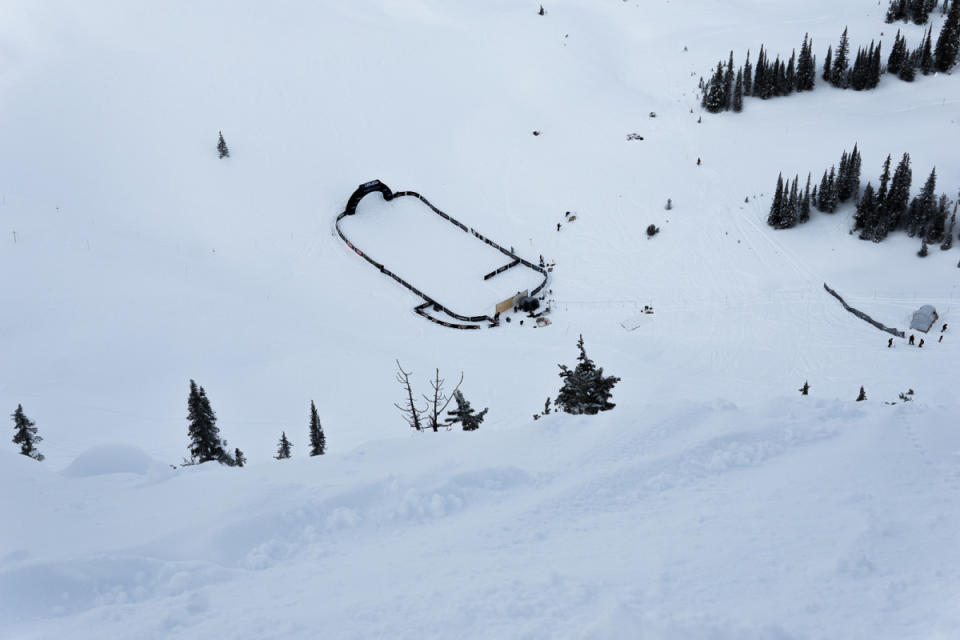
Photo: Ian Greenwood
At the first rider’s meeting that night, the FWT’s head judge and commissioner—Laurent “Lolo” Besse—delivered somewhat surprising news. The competition wouldn’t run on the FWT’s preferred Kicking Horse venue, a towering freeride-ready face called Ozone that’s delivered countless show stopping moments in the past.
Besse, with some help from Kicking Horse’s patrol team explained that, in late January, the resort experienced above freezing temperatures, causing a series of wet avalanches across Ozone.
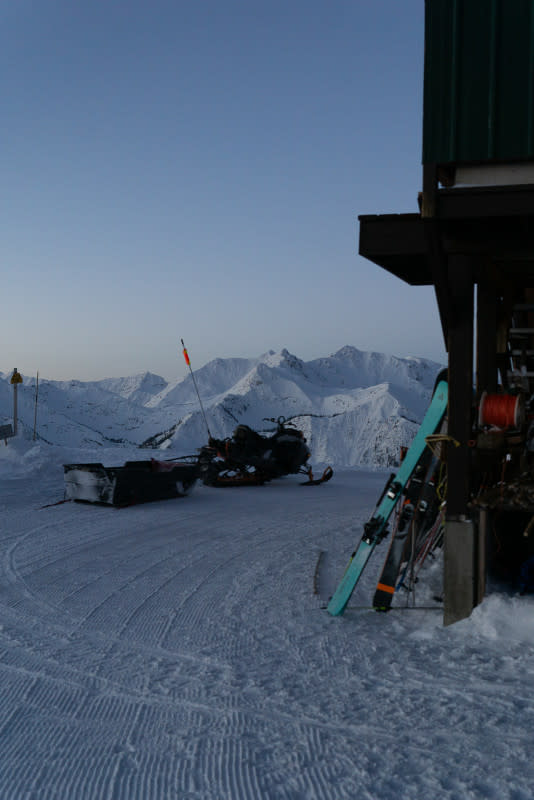
Photo: Ian Greenwood
Then, it got cold. While athletes could've safely skied the upper portion of Ozone, the icy chunder created by the refreeze would've eaten them alive as they straight-lined into the finish corral, forcing the event organizers to seek an alternative.
Luckily, the loss of Ozone wouldn't lead to a binned event. Kicking Horse works well as a FWT host resort because it houses multiple competition-worthy slopes, among other reasons. “You need to tick basically the three points which is good venues, good local collaboration, and funding,” Nicloas Hale-Woods, the FWT’s CEO, told me, explaining the rationale behind the partnership between Kicking Horse and the FWT.
With the planned availability of another, less clapped venue—Terminator 1 South, known as "T1" by locals—the show would go on. But, only a few days before the competition, the contents of said show remained an open question amidst the challenging conditions.
REFREEZE AND ADRENAL BUZZES
As I plunged down the resort during a media ski day before the competition, the deceptive nature of the snowpack became real. Five to ten inches of fresh had fallen on refreeze from the previous warming cycle. On video, my turns might've looked heroic, but those skiing Kicking Horse that day knew better. Each slash produced jarring feedback underfoot, the buried frozen layer threatening to throw us off balance.
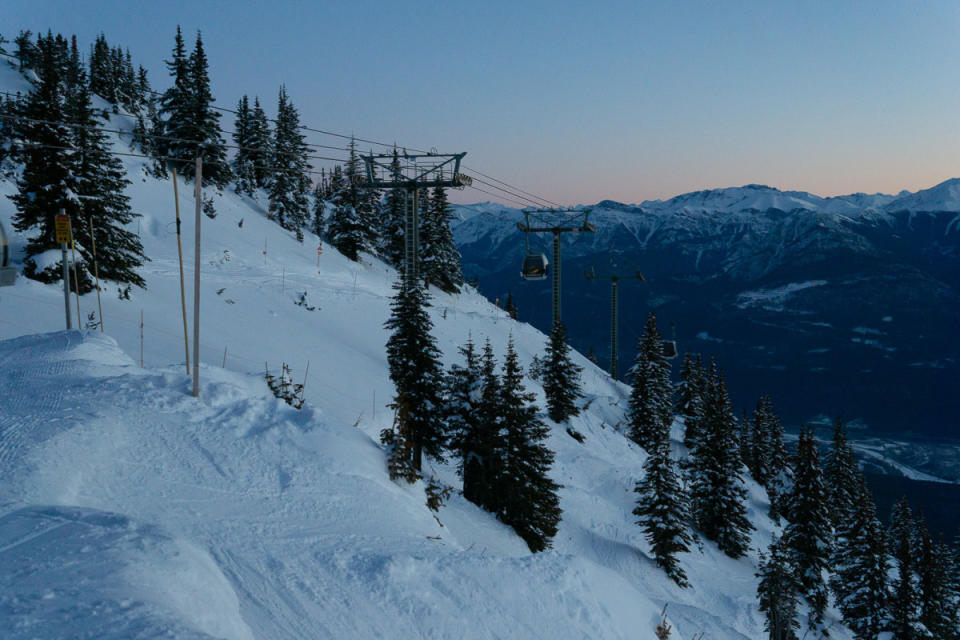
Photo: Ian Greenwood
To reach a vantage with views of T1 South, a local guide from Kicking Horse’s team took us on a hike that wound around the back of an adjacent peak, Terminator 2, which, you guessed it, is referred to colloquially as T2.
Here, the marriage between resort-level accessibility and heart-in-your-throat exposure at Kicking Horse was apparent. While the hike began on a gently sloping cat track, it quickly became steeper, reaching an apex with a narrow, nearly vertical boot pack sandwiched between walks along narrow ridges. A rope was affixed to the top of the boot pack should concerned skiers need it.
Andy Brown, Tourism Golden’s communications manager, explained that these sorts of adrenal buzzes are part of Kicking Horse’s appeal, rather than the juiced up après scenes provided elsewhere. “The majority of people that come here are hardcore skiers,” he told me in a conversation off the hill. “They know that Kicking Horse challenges them.”
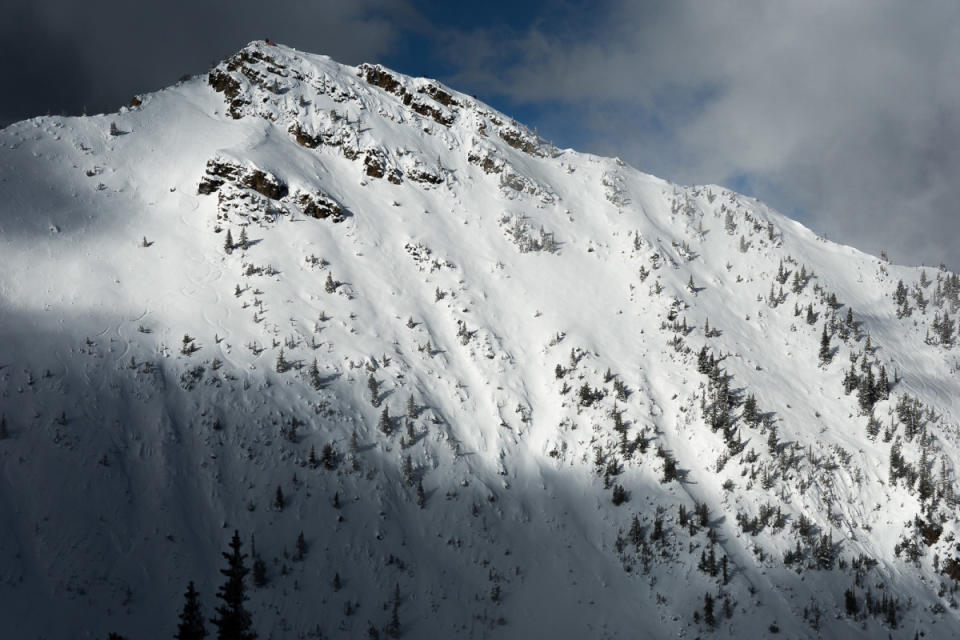
Photo: Ian Greenwood
While waiting for my turn to scramble upwards, I noted how not hardcore I felt: sweaty, out of breath, and slightly tinged with panic. When the boot pack cleared, I moved slowly, swinging the toes of my ski boots into the snow, hoping, no, praying, that I didn't slip and cartwheel backward. Hunched over, I reached a point where the slope became shallower and realized, taking a deep breath, that the hike's crescendo had come and gone. Relief washed over me.
Any hardened mountain person would laugh at my moment of fear. I was hiking around the back of T2, not descending a no-fall zone below the Aiguille du Midi. But Brown’s point remains—the average skier doesn’t need to work particularly hard to find a challenge at Kicking Horse. Nor would the FWT athletes come competition day.
T1 South, which sat across a small valley from where I stood below T2, is indisputably less of a “big mountain” venue than Ozone, which, to two of the competitors I spoke with, initially proved disappointing. “In the beginning, I was a bit sad. I wanted to ski Ozone again,” Max Hitzig said as we recapped his performance several days later. “But then I saw T1 South and the features looked really big.”
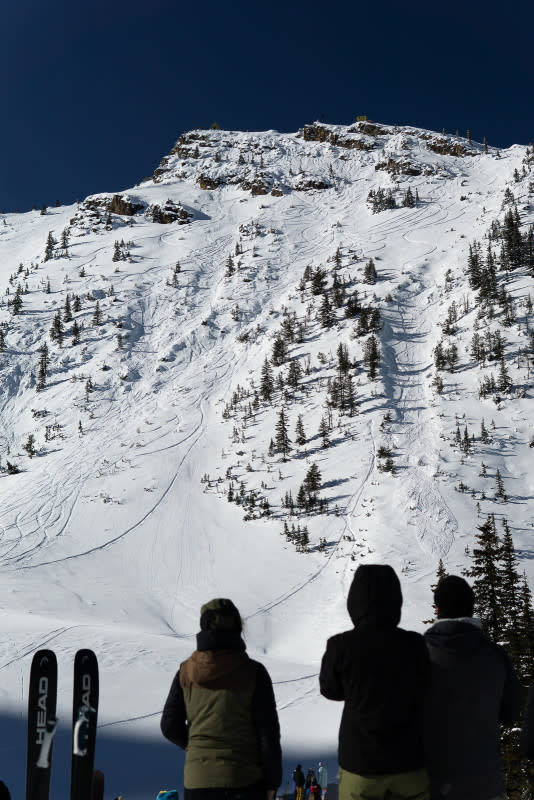
Photo: Ian Greenwood
Kicking Horse’s lower-than-average snow year had upped the venue’s extreme factor, but it also meant that peppery rocks and small trees dotted the face throughout, threatening to grab competitors. And, while the snow on the face appeared pristine and untouched from afar, I knew that the firm layer I’d encountered earlier in the day lurked beneath.
A SIMPLER OUTING
The next morning, I arrived at the base of T1 South to watch the forerunners ski the face. When the forerunners reached the bottom, Besse—the head judge—held a radio aloft so the gathered crowd of competitors could hear their assessment.
One of the forerunners, Jérémie Paquette, confirmed what everyone had already assumed as his voice crackled through Besse’s radio. The snow was funky, wind-affected, and firm underneath. It probably wasn’t going to be a powder day on T1 South.
But “that’s the game” with competitive freeride, explained Kicking Horse ski patroller and former FWT competitor Martin Lentz. “It’s so rare that you actually get good conditions,” he said as we rode the Golden Eagle Express. “I think that’s maybe what people aren’t always understanding when they’re watching [the FWT], is how good at skiing these people are.”
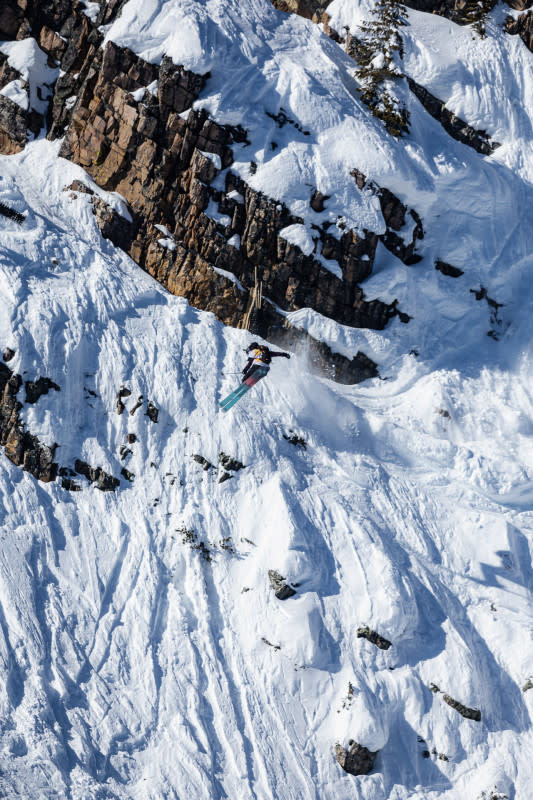
Dom Daher/FWT
Snow conditions aside, the event looked set to go smoothly from a logistics standpoint. A high-pressure system had created an extended period of cold and sunny conditions, allowing the FWT to pinpoint a competition date within its designated “weather window” well in advance.
It’s not always that simple, though, Lentz recalled. In 2022, the only other year the FWT used T1 South as a competition venue, winds over 70 miles per hour scoured Ozone, rendering the face unsafe. Once they confirmed that T1 South was a viable alternative, the event crew transported numerous shipping crates worth of gear from the base of Ozone to T1 South via helicopter that afternoon, only a day before the competition was scheduled.
Lentz, who was involved in the effort, remembered leaving T1 South at 6:30 PM after concluding his duties while members of the FWT crew lingered. “Their whole event team basically spent the entire night in the bowl setting up so that they could run a comp first thing in the morning,” said Lentz.
WHY DON’T WITCHES WEAR UNDERWEAR?
Several hundred spectators gathered at the base of T1 South on competition day beneath clear blue skies. As the snowboarders worked their way down the face, the atmosphere, due in part to frigid morning temperatures, was somewhat reserved, with action sports personalities Mark Warner of the Low Pressure Podcast and Brett Tippie working to entertain the crowd as the live MCs.
Tippie began soliciting “dad jokes” from the crowd. While most of the jokes proved harmless, the occasional R-rated quip snuck through. “Why don’t witches wear underwear?” one woman in the crowd asked. “Why?” Tippie wondered. “For better grip,” she replied. From then on, Warner and Tippie couched all “dad joke” solicitations in a keep it family friendly clause.
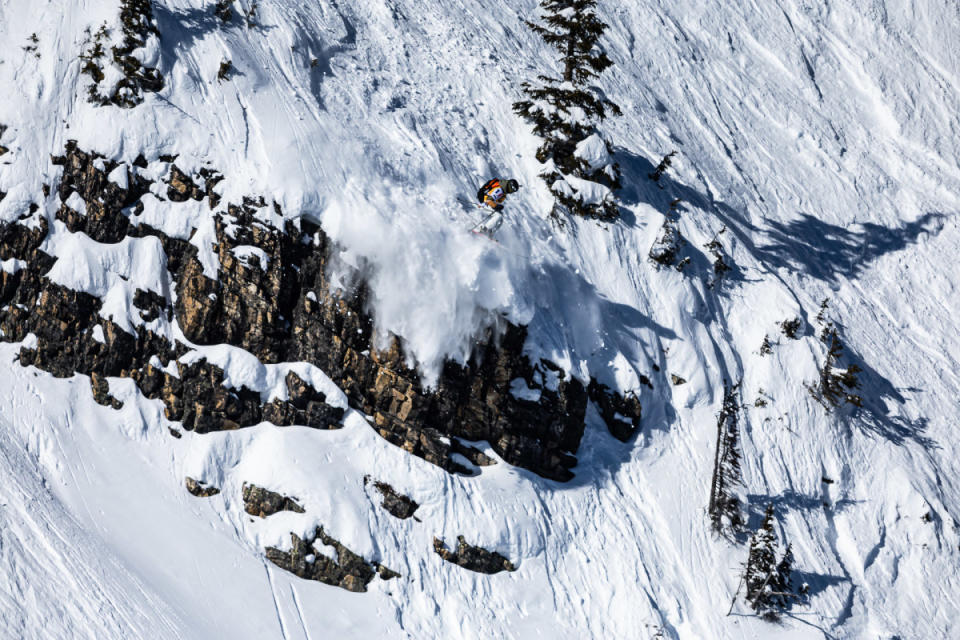
Photo: Dom Daher/FWT
As the sun peeked over the edge of T2 and the women’s ski field started, the crowd began to liven up further. The winner of this season’s previous FWT competition, Zuzanna Witych, was the first to drop. She produced a solid run with one minor control issue, getting hung up in the snow after successfully landing a cliff. The crust, invisible on the live stream, was beginning to make its presence known.
By the time women’s competition concluded, just under half of the field had crashed, although the first and second-place finishers stood apart from the rest with clean, progressive skiing. Rookies Astrid Cheylus and Manon Loschi laced top-to-bottom heaters, both capping their bids off with stomped backflips at the base of the venue.
A similar story played out as the male competitors dropped in. The first line, skied by wildcard Stan Rey, concluded with an impressive tomahawk as he found the refreeze and double ejected below a large cliff. Several podium contenders, like Maxime Chabloz and Max Palm, lost their footing. Andrew Pollard, one of the FWT’s cleanest and most consistent skiers, crashed during what should’ve been a routine portion of his line.
However, like the female competitors, the male roster had moments of unfettered freeride. The top three finishers, Max Hitzig, Oscar Mandin, and Marcus Goguen, skied as if they were riding perfect, untouched snow, creating an illusion of effortlessness. Hitzig and Mandin threw a 360 and a backflip, respectively, off a large cliff band in the middle of T1 South, producing a chorus of enthusiasm from the crowd.
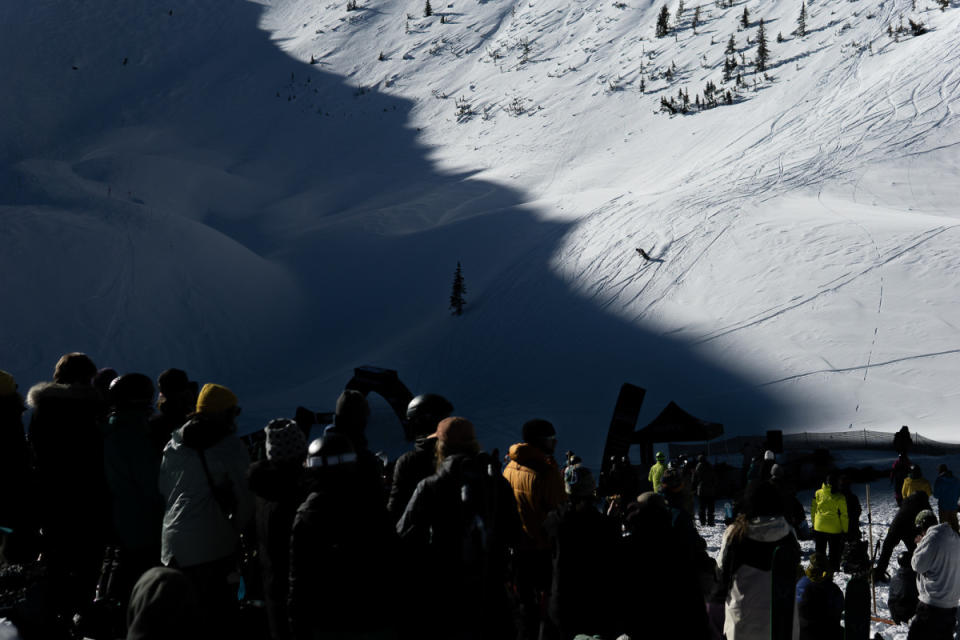
Photo: Ian Greenwood
IT WAS BETTER THAN EXPECTED
Cheylus and Hitzig, the women’s and men’s winners at Kicking Horse, represent freeride skiing’s next generation, capable of infusing the sport with combined freestyle and big mountain sensibilities.
They’re young—Cheylus is 20, and Hitzig is 21—a fact I forgot while watching them ski like FWT veterans during the competition. At their age, I wasn’t totally sure how to cook a chicken breast, let alone compete successfully on freeride skiing’s biggest stage.
In separate conversations, I asked them what they thought of the snow on T1 South—after a week of speculation, I wanted to hear a firsthand account. They answered the question similarly, noting the snow was better than expected.
It wasn’t quite that simple, though. The firm snow caused Cheylus to lose control after a drop, altering her trajectory briefly. “I missed one jump,” she said, similarly noting that she selected a safer line without any airs that were “too big.” Her approach paid off. Cheylus’ main goal this season as a rookie was to “make the cut”—meaning earn enough points to qualify for finals—which, with her first place finish at Kicking Horse, was realized.
Hitzig, too, dialed back the aggressiveness of his skiing, choosing a “safe” line and discarding more creative options due to the low snow cover. Although some version of that approach, perhaps surprisingly given his impressive skiing, is always baked into his strategy, regardless of the conditions.
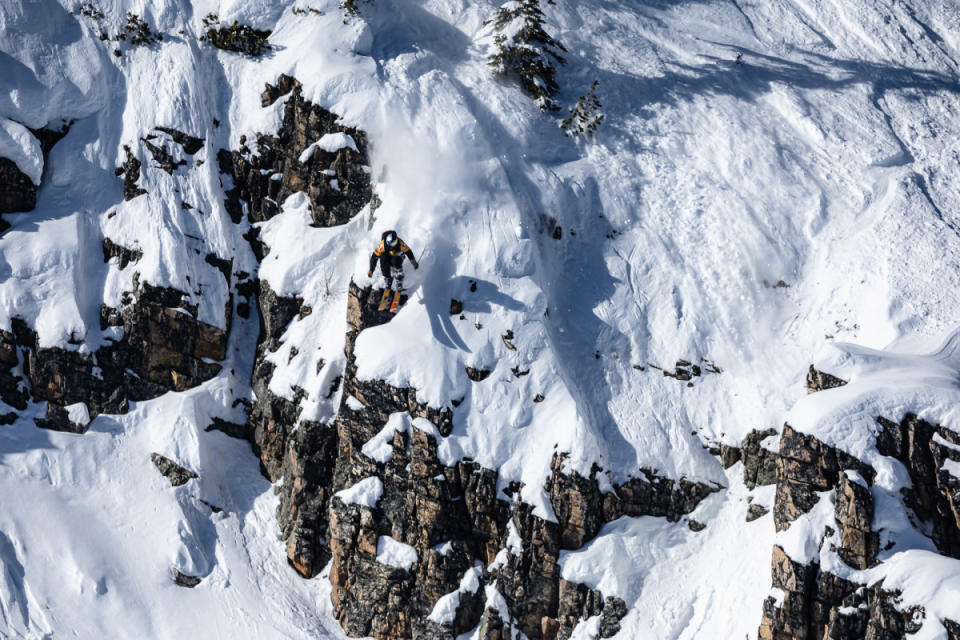
Dom Daher/FWT
“When I was younger, I competed in two junior comps, and I always gave 105% and crashed,” he said. After an intervention from a freeride mentor, Hitzig recalibrated, opting to give “97%” instead of leaving everything on the competition venue. It’s “hard to say what’s 97%, but I always try to do that.”
If the seriousness of Cheylus and Hitzig’s accomplishments conveyed maturity, the competition’s after-party depicted the opposite, as athletes and members of the public alike drenched themselves in bass drum laden pandemonium.
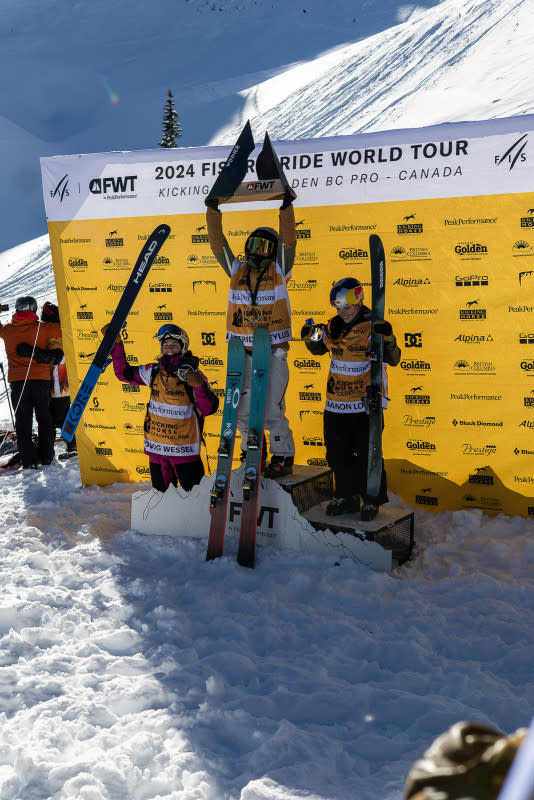
Photo: Ian Greenwood
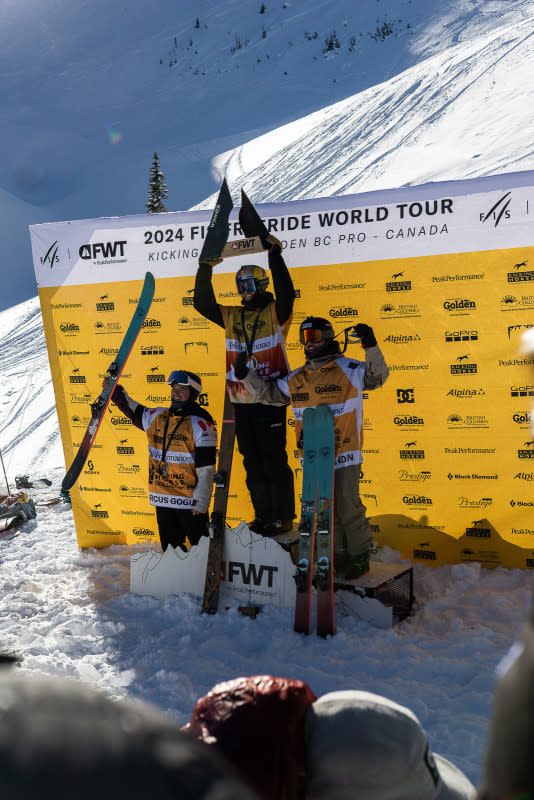
Photo: Ian Greenwood
Throughout the week, I’d heard that FWT winners are expected to spend 10% of their prize purse on drinks for fellow competitors during the after-party. One athlete noted that the tradition exists to an extent—and they did buy their friends beers after winning—but wasn’t strictly enforced in their case (presumably, it depends on the pushiness of a winner's friends). Still, this much was evident at the after-party: those in attendance were having fun, sometimes too much fun.
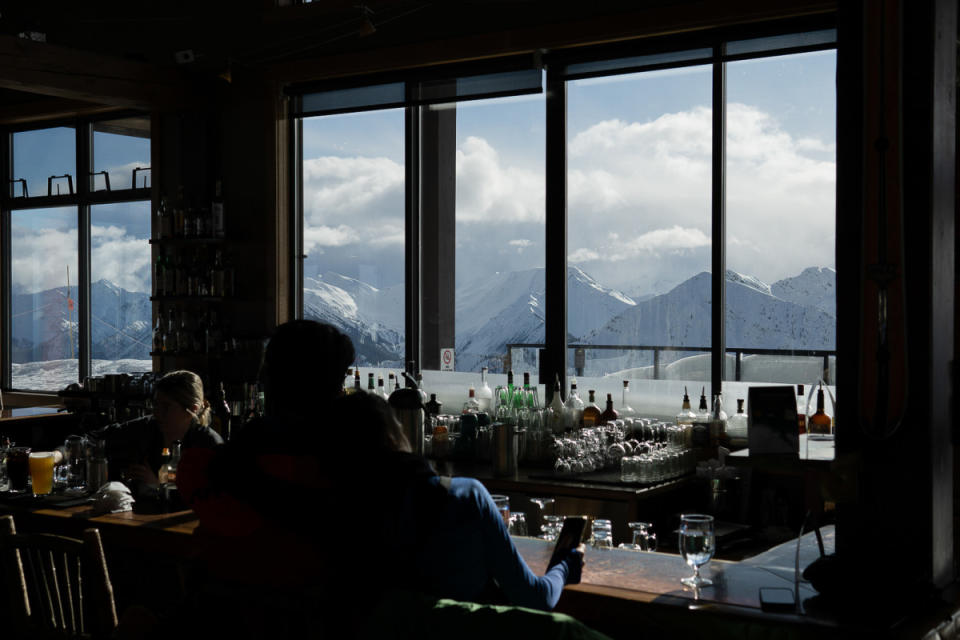
Photo: Ian Greenwood
As I stood slightly buzzed outside waiting for a shuttle back to my hotel, I overheard a group of guys lost in drunken ecstasy talking about their friend’s ill fortune. The friend had participated in a shot-ski but puked immediately afterward, one of the guys recalled, laughing hysterically. The drunkenness, of course, wasn’t the point. But the silliness was. While freeride skiing may be growing into an increasingly competitive and popular sport thanks to the likes of Cheylus and Hitzig—plus the efforts of those working hard behind the scenes—it still doesn’t seem to be taking itself too seriously.

